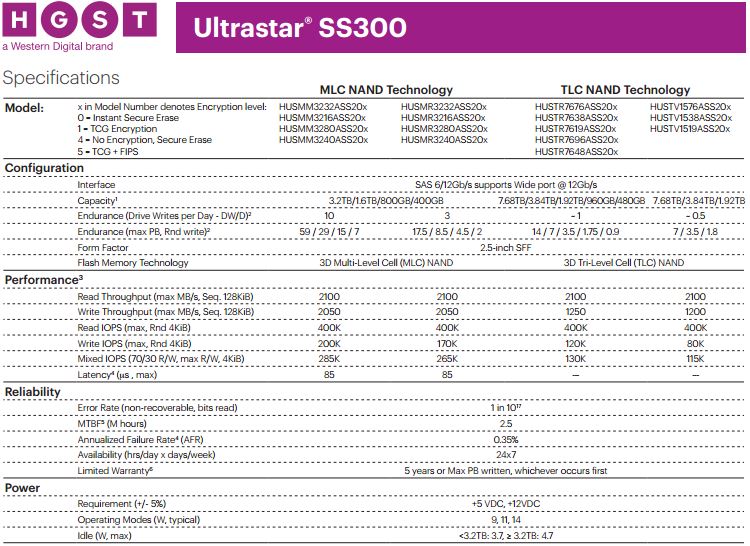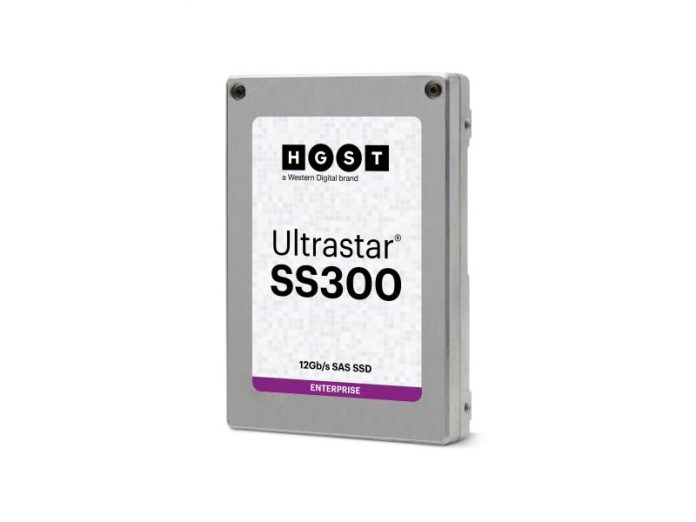The freshly launched Western Digital HGST SS300 SAS3 push the company’s boundaries in terms of capacities and the SAS3 interface’s performance. HGST has made some of the most well-regarded SAS SSDs for years so Western Digital is keeping their branding. While the world may be transitioning to NVMe, traditional scale-up infrastructures are still likely to use SAS. These drives can be dropped into existing systems for an easy upgrade path.
Western Digital HGST SS300 SAS3 SSD Key Specs
We wanted to highlight some of the key features coming with this generation. The first is capacity. Western Digital HGST Ultrastar SS300 SAS3 SSDs will come in capacities ranging from 400GB to 7.68TB. For those with existing 200-800GB class drives, the SS300 will allow 10x the capacity in the same SAS infrastructure. This is partially enabled by this generation’s support of 3D TLC NAND which helps boost capacity and reduce costs for that capacity.
As dual-ported drives, SAS3 can provide not only HA functionality, but also higher throughput. As you can see in our recent guides (e.g. Intel Optane Memory v. SATA v. NVMe SSD: WordPress / vBulletin Database Import / Export Performance) We are well beyond the point where SATA does not provide enough performance for NAND flash SSDs. SAS3 can provide about four times the bandwidth which is how one can get sequential reads/ writes in excess of 2GB/s.
Finally, we wanted to highlight an AFR of 0.35%. Compare this to disk where many people use a 5% AFR rating. Even our own production SSDs show a sub 0.5% failures per year. That reliability is having major impacts in the industry since servers and storage arrays need to be serviced less frequently.
We pulled the datasheet for the Western Digital HGST SS300 SAS3 SSDs and here are some of the key specs:

(Source: WD)
One of the more interesting notes here is that WD does not even cite the TLC latency specs. That somewhat makes sense as those drives are intended for read-intensive workloads.
You can read more about the drives here.




